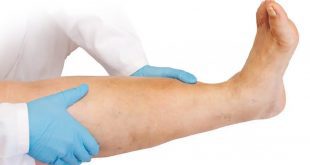 Nearly 30 million Americans suffer from dry eye conditions, which can range from mild to severe, intermittent (comes and goes) to chronic (ongoing). Symptoms of dry eye include redness, itching, burning, grittiness, tearing/discharge, irritation and fatigue. For many people, symptoms are so mild that they ignore them or routinely depend on OTC eye drops. But dry eye is more than uncomfortable – over time in can cause blurred or ghosting of vision and invite infection, making a timely and correct diagnosis important.
Nearly 30 million Americans suffer from dry eye conditions, which can range from mild to severe, intermittent (comes and goes) to chronic (ongoing). Symptoms of dry eye include redness, itching, burning, grittiness, tearing/discharge, irritation and fatigue. For many people, symptoms are so mild that they ignore them or routinely depend on OTC eye drops. But dry eye is more than uncomfortable – over time in can cause blurred or ghosting of vision and invite infection, making a timely and correct diagnosis important.
So, what causes dry eye? For many people, dry eye is a condition associated with aging. For others, it is caused by a systemic condition like thyroid disease, diabetes, lupus, rheumatoid arthritis or Sjogren’s syndrome. Long-term contact lens use and some medications can also cause dry eye. But a whopping 86% of chronic dry eye cases are attributable to a condition known as Meibomian Gland Dysfunction,
or MGD, a malfunction of the meibomian glands in the eyelids. These glands are responsible for lubricating the eye surface with oil and maintaining the protective water layer created by the tear ducts. MGD
is especially common among older people, whose meibomian glands tend to be prone to blockage, disrupting normal function.
Effective treatment depends on first getting an accurate diagnosis. Because dry eye has so many causes, Lake Eye’s Board Certified ophthalmologists employ a multifaceted diagnostic system for superior accuracy and assessment of severity, including a brief questionnaire, a test of the eyes’ osmolarity, which measures ocular surface and tear film health, a test called InflammaDry®, which is a visual examination of one’s blink rate and the time it takes tears to dissipate, and the new LipiScan™ system, the most accurate test ever created to detect MGD. These tests can all be performed quickly and comfortably at every
Lake Eye office, and your ophthalmologist can deliver your diagnosis immediately afterward so treatment can begin or be scheduled the same day.
Mild to moderate cases can usually be addressed using nutritional supplements like HydroEye®, a patented fatty acid formula that soothes the ocular surface and supports healthy tear film, or prescription eye drops such as Restasis® or Xiidra®, which help eyes produce more of their own tears. We also offer supplementary treatments like Oasis eye masks, drops and cleansers that help calm irritation and support moisture balance. “These treatments, alone or in combination with lifestyle and medication changes, are often enough to provide genuine relief to patients whose dry eye problems are relatively mild,” says
ophthalmologist Dr. Scot Holman.
More severe cases of dry eye are usually caused by MGD, a disease that has been historically difficult to diagnose. “Before now, testing for MGD was often inaccurate,” says comprehensive ophthalmologist Shelby Terpstra, DO. “The LipiScan system combined with Lake Eye’s other diagnostic analyses makes identifying MGD easier and more precise than ever before.”
To understand how it’s treated, one must first understand the basics of MGD. “When the meibomian glands are blocked, tears evaporate off the surface of the eye, causing dryness, discomfort and compromised vision,” explains ophthalmologist Dr. Scott Wehrly. “Over-the-counter eye drops are insufficient to provide lasting lubrication, and in fact can contribute to symptoms when used too often by patients with MGD.”
Lake Eye is among the first regional providers to feature the new LipiScan™ system, the first and only rapid high definition imager dedicated to diagnosing MGD. It enables Lake Eye’s ophthalmologists to quickly assess if and how much a patient’s meibomian glands are blocked. If MGD is present, Lake Eye incorporates a revolutionary new treatment called LipiFlow®, a patented FDA-cleared external device that applies a combination of heat and massage to the inner eyelids to gently remove blockages from the meibomian glands so they can function more effectively. For most patients, a single treatment can slow or stop the progression of MGD and alleviate symptoms for up to two years.
Full effect may take several weeks, and anti-inflammatory eye drops should be used the week following the procedure. “What’s exciting about this technology is that is presents more than just a treatment of symptoms,” says ophthalmologist Dr. Vinay Gutti. “It actually addresses the cause of these symptoms, and it does so safely and comfortably, without drugs or surgery. That’s an exciting breakthrough for MGD
sufferers.”
If you’re experiencing intermittent or chronic dry, red, tired eyes, schedule a dry eye evaluation by calling the Lake Eye location near you.
Lake Eye
352-750-2020
Check Also
Obstructive Sleep Apnea & Oral Appliances: A Solution for a Good Night’s Sleep
By Richard W. Rozensky, DDS, D.ABDSM Sleep apnea affects more than 25 million people in …
 Central Florida Health and Wellness Magazine Health and Wellness Articles of the Villages
Central Florida Health and Wellness Magazine Health and Wellness Articles of the Villages



